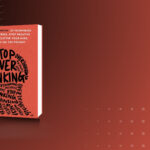
Shoe Dog Book Summary by Phil Knights
June 26, 2024
5 Important Takeaways from “Stop Overthinking” by Nick Trenton
July 23, 2024I recently read the book “Can’t Hurt Me” by David Goggins. It’s an incredibly inspiring story of overcoming adversity, pushing the limits of human endurance, and breaking free from the mental barriers that hold us back.
Goggins’ journey from an overweight, depressed young man with a traumatic childhood to a Navy SEAL and ultra-endurance athlete is nothing short of extraordinary. The book is filled with powerful lessons on mental toughness, resilience, and self-discipline. Today, I want to share with you the most actionable ideas I learned from this book, illustrated with real-life examples from Goggins’ own experiences.
Embrace the Suck: Key Lessons from Can’t hurt me
One of the core messages of “Can’t Hurt Me” is the concept of embracing discomfort and pushing through pain. Goggins learned this lesson early in his Navy SEAL training. During Hell Week, a grueling five-and-a-half-day stretch of continuous physical and mental challenges, many candidates drop out. Goggins, however, thrived by accepting the pain and using it as a tool to build his mental toughness. He embraced the suck and pushed his limits, knowing that the pain was temporary but the strength he gained was permanent.
For instance, when Goggins decided to train for his first ultra-marathon, he was far from being in shape. He ran 100 miles in under 19 hours with barely any preparation, enduring excruciating pain and injuries. Instead of giving up, he used this experience to fuel his determination and prove to himself that he could withstand unimaginable hardship. This mindset of embracing discomfort can be applied in our own lives. When faced with challenging situations, instead of shying away, we should lean into the struggle, knowing that it will make us stronger in the long run.
The Accountability Mirror: Essential Insights from Can’t hurt me by David Goggins
Another powerful tool Goggins shares is the Accountability Mirror. As a teenager, he struggled with obesity and a lack of direction. Every night, he would look into the mirror and confront the harsh truths about himself. He wrote down his goals and the steps needed to achieve them on Post-it notes, sticking them around the mirror. This ritual of self-reflection and accountability helped him stay focused and motivated.
For example, when he decided to become a Navy SEAL, he was overweight and had only three months to lose over 100 pounds. By using the Accountability Mirror, he kept himself on track, reminding himself daily of his goals and the actions required to reach them. This practice can be incredibly effective for anyone looking to make significant changes in their life. Regularly evaluating our progress and holding ourselves accountable can keep us committed to our goals and propel us forward.
Callousing the Mind: Key Takeaways from Can’t hurt me
Goggins talks about the importance of callousing the mind, much like we callous our hands through hard work. This involves intentionally putting ourselves in uncomfortable situations to build mental resilience. Throughout his life, Goggins sought out opportunities to toughen his mind. Whether it was enduring the brutal training of Navy SEALs, completing ultra-marathons, or breaking the world record for the most pull-ups in 24 hours, he constantly pushed his limits to strengthen his mental fortitude.
For instance, during his preparation for the pull-up record, Goggins faced numerous setbacks, including severe injuries. However, instead of giving up, he saw these challenges as opportunities to further callous his mind. He kept pushing through the pain, eventually achieving his goal. To apply this in our own lives, we can seek out challenges that push us beyond our comfort zones. By consistently facing and overcoming difficulties, we can build a mental toughness that prepares us for any obstacle.
The 40% Rule: Core Messages from Can’t hurt me
One of the most profound lessons from “Can’t Hurt Me” is the 40% Rule. Goggins explains that when we think we are done and have reached our limit, we are actually only at 40% of our true potential. This rule is a testament to the untapped potential within all of us. Goggins discovered this during his grueling physical training and endurance events, where he repeatedly pushed himself beyond what he thought was possible.
For example, during his attempt to break the pull-up record, Goggins faced immense physical pain and exhaustion. However, by applying the 40% Rule, he pushed himself to keep going, ultimately breaking the record. This rule can be a game-changer in our own lives. Whenever we feel like quitting, we should remind ourselves that we have much more to give. By pushing past that initial barrier, we can achieve far greater results than we ever imagined.
Taking Souls: Can’t hurt me’s Key Concepts
Goggins introduces the concept of Taking Souls as a way to gain a psychological edge over challenges and adversaries. This involves outworking and outlasting opponents, whether they are other people or the obstacles we face. During his SEAL training, Goggins would use this mentality to push himself harder when instructors tried to break him. Instead of succumbing to the pressure, he would push back with even more intensity, effectively “taking their souls” by showing that he could not be broken.
For instance, during a particularly brutal training exercise, Goggins and his fellow trainees were ordered to perform countless push-ups in freezing cold water. While others complained and showed signs of breaking, Goggins pushed himself harder, showing his instructors that he was unbreakable. This not only boosted his own confidence but also demoralized those trying to bring him down. We can adopt this mentality in our own challenges, pushing harder when faced with adversity and showing that we cannot be defeated.
Visualization and Self-Talk: Critical Lessons from Can’t hurt me
Goggins also highlights the power of visualization and positive self-talk. He used these techniques to overcome many of his toughest challenges. Visualization involves mentally rehearsing a desired outcome or performance, which helps prepare the mind for success. Positive self-talk involves replacing negative thoughts with empowering affirmations.
For instance, when training for ultra-endurance events, Goggins would visualize himself crossing the finish line, feeling strong and accomplished. He also used positive self-talk to silence the negative voices in his head that told him to quit. This practice helped him stay focused and motivated, even during the most grueling moments. We can use these techniques in our own lives to overcome obstacles and stay committed to our goals. By visualizing success and maintaining positive self-talk, we can boost our confidence and increase our chances of achieving our objectives.
In conclusion, “Can’t Hurt Me” by David Goggins is a powerful book that teaches us how to break through mental barriers, embrace discomfort, and push beyond our perceived limits. By adopting the lessons of embracing the suck, using the Accountability Mirror, callousing the mind, applying the 40% Rule, taking souls, and using visualization and self-talk, we can unlock our true potential and achieve greatness.
If you would like a one-page PDF summary of insights that I got from this book, just click the link below, and I’d be happy to email it to you. If you already subscribe to the free Weekend Book Club email newsletter, this PDF is sitting in your inbox.
And if you’re looking for a detailed, chapter-by-chapter ebook summary of the book, check out our Gumroad store! Our summaries are filled with actionable ideas and practical tips to help you apply the key concepts in real life so make sure you check it out.

